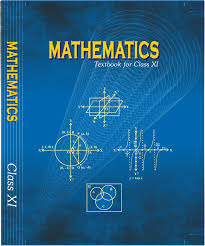Class 11 - Mathematics
Sets - Exercise 1.6

Top Block 1
Question 1:
If X and Y are two sets such that n(x) = 17, n(Y) = 23 and n(X ∪ Y) = 38, find n(X ∩ Y).
Answer:
It is given that: n(x) = 17, n(Y) = 23, n(X ∪ Y) = 38
We know that
n(X ∪ Y) = n(x) + n(Y) – n(X ∩ Y)
⇒ 38 = 17 + 23 – n(X ∩ Y)
⇒ 38 = 40 – n(X ∩ Y)
⇒ n(X ∩ Y) = 40 – 38
⇒ n(X ∩ Y) = 2
Question 2:
If X and Y are two sets such that X ∪ Y has 18 elements, X has 8 elements and Y has 15 elements; how many elements does X ∩ Y have?
Answer:
It is given that: n(x) = 8, n(Y) = 15, n(X ∪ Y) = 18
We know that
n(X ∪ Y) = n(x) + n(Y) – n(X ∩ Y)
⇒ 18 = 8 + 15 – n(X ∩ Y)
⇒ 18 = 23 – n(X ∩ Y)
⇒ n(X ∩ Y) = 23 – 18
⇒ n(X ∩ Y) = 5
Question 3:
In a group of 400 people, 250 can speak Hindi and 200 can speak English. How many people can speak both Hindi and English?
Answer:
Let H be the set of people who speak Hindi, and E be the set of people who speak English.
So, n(H ∪ E) = 400, n(H) = 250, n(E) = 200, n(H ∩ E) = ?
We know that: n(H ∪ E) = n(H) + n(E) – n(H ∩ E)
⇒ 400 = 250 + 200 – n(H ∩ E)
⇒ 400 = 450 – n(H ∩ E)
⇒ n(H ∩ E) = 450 – 400
⇒ n(H ∩ E) = 50
Thus, 50 people can speak both Hindi and English.
Question 4:
If S and T are two sets such that S has 21 elements, T has 32 elements, and S ∩ T has 11 elements, how many elements does S ∪ T have?
Answer:
It is given that: n(S) = 21, n(T) = 32, n(S ∩ T) = 11
We know that: n (S ∪ T) = n (S) + n (T) – n (S ∩ T)
⇒ n (S ∪ T) = 21 + 32 – 11
⇒ n (S ∪ T) = 42
Thus, the set (S ∪ T) has 42 elements.
Question 5:
If X and Y are two sets such that X has 40 elements, X ∪ Y has 60 elements and X ∩ Y has 10 elements, how many elements does Y have?
Answer:
It is given that: n(x) = 40, n(X ∪ Y) = 60, n(X ∩ Y) = 10
We know that:
n(X ∪ Y) = n(x) + n(Y) – n(X ∩ Y)
⇒ 60 = 40 + n(Y) – 10
⇒ 60 = 30 + n(Y)
⇒ n(Y) = 60 – 30
⇒ n(Y) = 30
Thus, the set Y has 30 elements.
Mddle block 1
Question 6:
In a group of 70 people, 37 like coffee, 52 like tea and each person likes at least one of the two drinks.
How many people like both coffee and tea?
Answer:
Let C denote the set of people who like coffee, and T denote the set of people who like tea
Now, n(C ∪ T) = 70, n(C) = 37, n(T) = 52
We know that:
n(C ∪ T) = n(C) + n(T) – n(C ∩ T)
⇒ 70 = 37 + 52 – n(C ∩ T)
⇒ 70 = 89 – n(C ∩ T)
⇒ n(C ∩ T) = 89 – 70 ⇒ n(C ∩ T) = 19
Thus, 19 people like both coffee and tea.
Question 7:
In a group of 65 people, 40 like cricket, 10 like both cricket and tennis.
How many like tennis only and not cricket? How many like tennis?
Answer:
Let C denote the set of people who like cricket, and T denote the set of people who like tennis
Now, n(C ∪ T) = 65, n(C) = 40, n(C ∩ T) = 10
We know that:
n(C ∪ T) = n(C) + n(T) – n(C ∩ T)
⇒ 65 = 40 + n(T) – 10
⇒ 65 = 30 + n(T)
⇒ n(T) = 65 – 30
⇒ n(T) = 35
Therefore, 35 people like tennis.
Now,
(T – C) ∪ (T ∩ C) = T
Also,
(T – C) ∩ (T ∩ C) = φ
⇒ n(T) = n(T – C) + n(T ∩ C)
⇒ 35 = n(T – C) + 10
⇒ n(T – C) = 35 – 10
⇒ n(T – C) = 25
Thus, 25 people like only tennis.
Question 8:
In a committee, 50 people speak French, 20 speak Spanish and 10 speak both Spanish and French.
How many speak at least one of these two languages?
Answer:
Let F be the set of people in the committee who speak French, and S be the set of people in
the committee who speak Spanish.
Now, n(F) = 50, n(S) = 20, n(S ∩ F) = 10
We know that:
n(S ∪ F) = n(S) + n(F) – n(S ∩ F)
= 20 + 50 – 10
= 70 – 10
= 60
Thus, 60 people in the committee speak at least one of the two languages.
Bottom Block 3
Click here to visit Official CBSE website
Click here for NCERT solutions
Click here to visit Official Website of NCERT
Click here to download NCERT Textbooks
